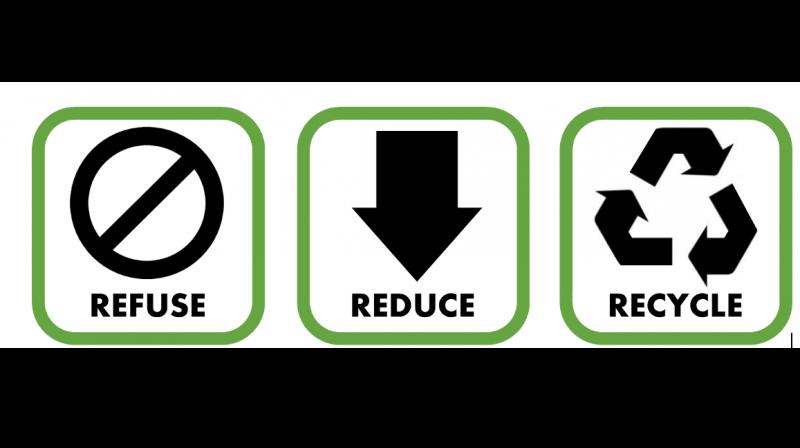Refuse, reduce and recycle has a very different meaning for marketing folks at service organisations.
Telecom companies or telcos as we all know them, like many other service providers, prioritise customer acquisition as a key growth strategy.
Large consumer catchment events provide a fantastic opportunity for brands to drive 'rapid acquisitions'.
Telcos love to participate at Comex Singapore to capitalise on the surge in consumer traffic by offering deals with steep discounts, free devices, and attractive bundles.
These highly aggressive acquisition strategies almost always lead to an unintended yet well-known (therefore a fully intended) outcome - frustrating existing customers and potentially driving them into the arms of competitors.
This is where the refuse, reduce and recycle takes on a whole new meaning in the form of refuse existing customers, reduce their loyalty and recognition and recycle them by pushing them to the competitors in the hope of getting them back later at the next Comex through freebies.
I was blatantly told by both my service providers at Comex to sign-up for the new offer and then after a while terminate my existing subscriptions if I wanted to take advantage of the latest offers. Or, go to the rival telco and come back next year.
There is nothing wrong with having an acquisition strategy except when it comes at the cost of a retention strategy and most telcos don’t have any or they are the best-kept internal secrets.
Following is the outcome of an acquisition strategy without a retention strategy.
The acquisition versus retention dilemma
For many long-time subscribers, the lack of similar offers to renew their services even when they don’t have a contract any more or have an existing contract is seen as a snub. Existing customers can easily find themselves facing higher prices or less attractive renewal deals compared to new customers. As a result, this only drives frustration among loyal users, making them feel undervalued by their current telco service provider.
Driving existing customers to competitors
Since the existing customers are not allowed to take advantage of the promotional deals being offered to new customers at Comex the message is clear: if you want the best deals, it’s better to be a new customer. This leads to a paradoxical outcome where loyal customers are directly and explicitly encouraged to leave and explore options with other telcos. And here is the icing on the cake - the rival companies poach them with the same acquisition offers that the existing telcos deny their existing but non-contracted subscribers of.
Enticing customers from other providers
Aggressive price wars during Comex also play a key role in enticing customers from rival providers. As most contracts are typically 12-24 months long, people nearing the end of their term or those who have finished their terms do not renew and are on the lookout for better deals, and Comex presents a golden opportunity for telcos to steal market share from competitors.
On the flip side, this aggressive and rapid acquisition strategy makes them lose as many of their customers overnight which they are not tracking anywhere I presume.
Implications for the market
This acquisition-centric approach, while effective in the short term, raises questions about the sustainability of these strategies. Churning customers from one telco to another creates a recycling scenario where customer loyalty becomes nearly impossible to maintain.
If customers consistently find themselves incentivised to switch providers rather than remain loyal, the entire industry then faces a race to the bottom in terms of pricing and profitability.
Additionally, by alienating existing customers, telcos risk creating a negative brand reputation, where loyalty is seen as a liability rather than something to be rewarded.
Finding a balance: Rewarding loyalty while attracting new customers
In an era where customer experience is a key differentiator, telcos must carefully balance their acquisition strategies with robust retention programs.
To avoid driving away loyal customers while still taking advantage of the huge opportunity that Comex, or any other acquisition event or program offers, telcos must adopt a more balanced approach:
Customised renewal offers: Existing customers should receive exclusive renewal deals that are competitive with new customer offers. This ensures they feel valued and are less likely to look elsewhere.
Loyalty programs: Telcos could introduce tiered loyalty programs where long-time customers get more perks or better pricing. This will incentivise retention and reward commitment.
Flexible upgrade options: Allowing current customers to easily upgrade their plans or access limited-time offers can help them feel included, reducing the desire to switch providers.
Transparency and communication: Communicating the value that existing customers receive over time (such as higher speeds, better devices, etc.) helps maintain trust and avoids the perception that new customers are favoured.
To conclude, the aggressive acquisition offers provide an opportunity for telcos to grow their customer base rapidly by enticing users from rival providers. These very strategies come at the expense of customer churn and damage brand loyalty.
To succeed long-term, telcos must find ways to reward both new and existing customers, ensuring a more sustainable, mutually beneficial relationship in an increasingly competitive market.
Samir Dixit is global head-growth and consulting, Acorn Management Consulting.

.jpg)









